
Duvaucelia odhneri, is a species of dendronotid nudibranch. It is a marine gastropod mollusc in the family Tritoniidae.

Haliclona anonyma, the turret sponge or tubular fan sponge, is a species of demosponge. It is endemic to South Africa, where it occurs between the Cape Peninsula and Sodwana Bay.

The walking anemone, also known as the hedgehog anemone or sock anemone, is a species of sea anemones in the order Actiniaria. It is the only member of its genus, Preactis.

The multicoloured sea fan is a species of gorgonian sea fan in the family Melithaeidae.
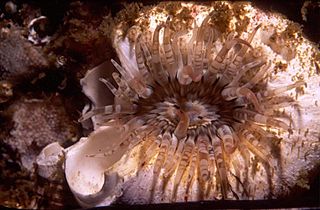
The ring-tentacle anemone is a species of sea anemone in the family Isanthidae.

The Cape zoanthid is a species of zoanthid in the family Parazoanthidae.
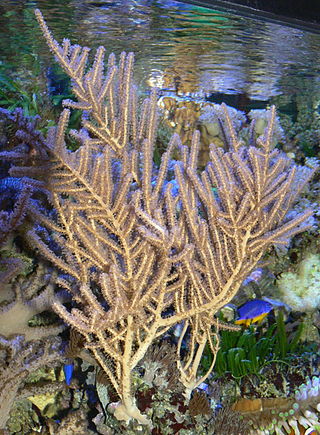
Holaxonia is a suborder of soft corals, a member of the phylum Cnidaria. Members of this suborder are sometimes known as gorgonians and include the sea blades, the sea fans, the sea rods and the sea whips. These soft corals are colonial, sessile organisms and are generally tree-like in structure. They do not have a hard skeleton composed of calcium carbonate but have a firm but pliable, central axial skeleton composed of a fibrous protein called gorgonin embedded in a tissue matrix, the coenenchyme. In some genera this is permeated with a calcareous substance in the form of fused spicules. Members of this suborder are characterized by having an unspiculated axis and often a soft, chambered central core. The polyps have eight-fold symmetry and in many species, especially in the families Gorgoniidae and Plexauridae, contain symbiotic photosynthetic algae called zooxanthellae. These soft corals are popular in salt water aquaria.

The purple soft coral is a species of colonial soft coral in the family Alcyoniidae.
The Valdivian soft coral is a species of colonial leathery or soft coral in the family Alcyoniidae.

The variable soft coral is a species of colonial soft coral in the family Alcyoniidae.

The sun-burst soft coral is a species of colonial soft corals in the family Malacacanthidae. It is the only species known in the genus Malacacanthus.

The cauliflower soft coral is a species of colonial soft coral in the family Nephtheidae.
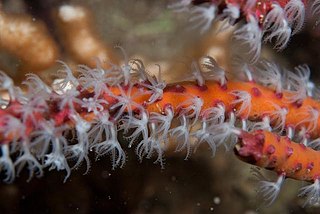
The gorgonian twig coral is a species of gorgonian sea fan in the family Anthothelidae.

The nippled sea fanEunicella microthela previously known by the junior synonym Eunicella papillosa, is a species of gorgonian sea fan in the family Gorgoniidae.

The sinuous sea fan is a species of gorgonian sea fan in the family Gorgoniidae.
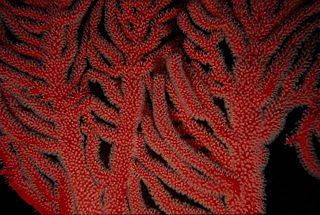
The palmate sea fan is a species of gorgonian sea fan in the family Gorgoniidae.
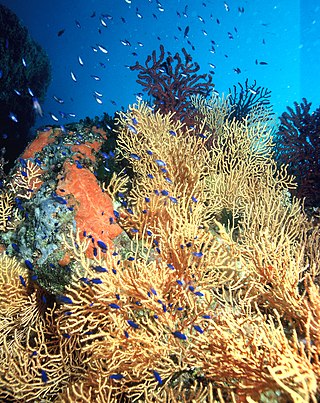
Eunicella cavolini, commonly known as the yellow gorgonian or yellow sea whip, is a species of colonial soft coral in the family Gorgoniidae. It is native to parts of the eastern Atlantic Ocean, Mediterranean Sea and Ionian Sea where it is a common species.

Astrocladus euryale, the basket star, or gorgon's head is a brittlestar of the family Gorgonocephalidae found in the coastal waters of South Africa from the west coast of the Cape Peninsula to about Algoa Bay.

Gymnocrotophus curvidens, the Janbruin, is a species of marine fish in the seabream family of order Perciformes. It is native to the south coast of South Africa.



















